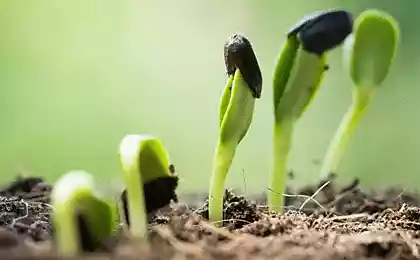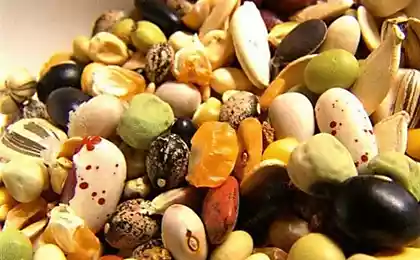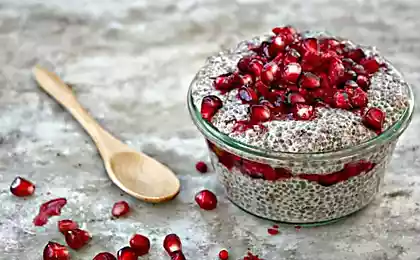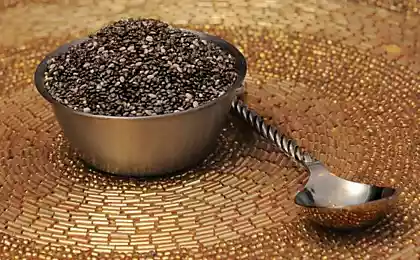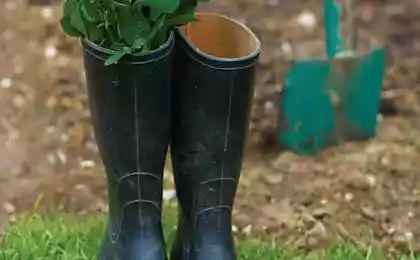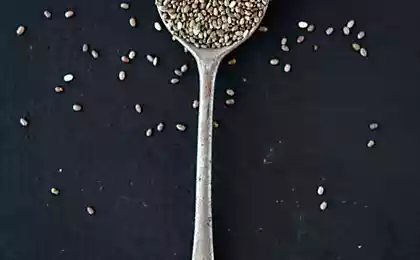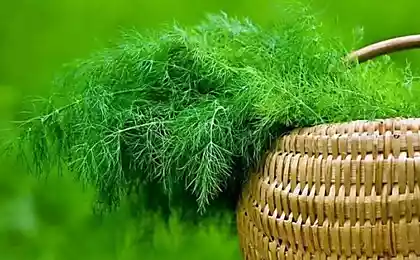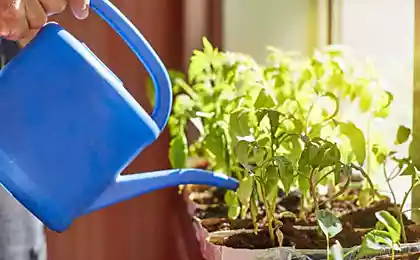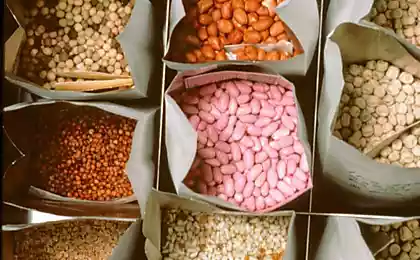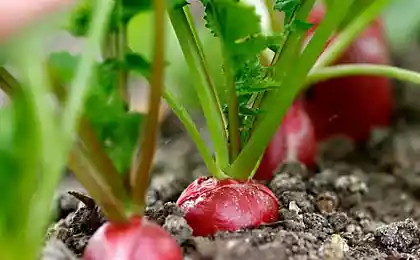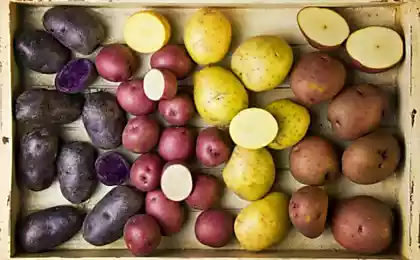589
How to grow ornamental trees from seed
All woody plants reproduce in two ways — seed and vegetative. Seed propagation is done by sowing seeds in nursery and growing them from seedlings. This method is characterized by simplicity, high productivity, high efficiency. Woody plants obtained in this way have a strong root system, robust and durable.
Vegetative propagation is done by parts of plants by cuttings, layering, root suckers and grafting. In this way propagated in the nursery of the poplar, willow, currant, Tamarix, grapes and other plants, as well as spherical, pyramidal, weeping variegated forms of tree species and seedlings of woody crops.
Ninety nine million one hundred five thousand four hundred seventy nine
Trees and shrubs cease to bear fruit upon reaching maturity. Fast-growing breed of fruit at an earlier age than slow growing ones. Thus, the fruiting of acacia begins with 5-6 years, and the common oak — 12-14 years. Trees in natural plantations begin to bear fruit at a later age than in the artificial. So, pine in natural stands begins to bear fruit at 40-50 years, artificial — 10 years; oak natural plantations fruits in 35-40 years, and in artificial (in the South) — 20 years.
All trees and shrubs bear fruit annually, and in certain periods. Harvesting of seeds usually begins with harvest.
Fruit tree species are divided into two groups: fleshy and dry. Dry fruits are fruits with odnorodnosti or woody pericarp. They, in turn, are divided into prescribedin and drop down. To prescribesome is the walnut — fruit with a hard woody pericarp, for example, acorn oak, hazel, beech nut, hazel; nut (achene) — birch, alder, lime, hornbeam. Achene is lionfish fruits of ash, maple, elm, under the action of wind, they propagate to large distances. Drop-down fruit boxes and beans. The first is the box, willows, poplars, aspen, lilac, chestnut, Wahoo, second — beans yellow and white acacia, the gleditsia.
There are other types of fruits. So, drupe — juicy, one-seeded fruit of cherry, plum, dogwood, wild cherry, blackthorn, viburnum, Elaeagnus, bobovnik, Gotovina, almond, pistachio, walnut and black; berry — juicy seeded fruit currants, gooseberries, Privet, honeysuckle, Amur velvet, sea buckthorn, grapes, etc. the Seed part of the fruit, developed from the ovule of the ovary, reproductive organs of all seed plants. In practice, seeds are sometimes called themselves the fruits, especially when the seeds are non-separated, for example lionfish maples, ash etc.
Seventy three million one hundred ninety eight thousand five hundred eighty two
A good seed can be obtained only from ripe and timely collected seeds. As they Mature the colour of the fruit changes from green immature fruit to dark brown, brown, red, black in Mature. Some of the seeds after ripening immediately showered (birch, poplar, fir, elm), while others remain long on the tree, often until the following spring (locust, maple, Linden, etc.). Seeds damaged by various fungal diseases or pests, collecting are not subject. The collection is made from growing trees to drop seeds or from the ground after dropping them from the trees.
Seeds from the cones is removed in a dryer at a certain temperature. The maximum temperature in the drying chambers for pine 50° C, and for spruce and larch 40-45° C. the Drying chamber should be equipped with permanent ventilation to quickly remove cones from evaporating moisture.
The seeds of the elm, ordinary elm, the bark starts to collect since the yellowing lionfish 3-5 days before their massive fall, then clear them from impurities and dried for 4-5 days in a secure location. Lionfish are harvested in calm weather (or shake off) on a specially podolany canopy. The collected lionfish immediately sown.
Earth usually collect the large seeds of oak, beech, walnut, horse chestnut, the fruit of Apple, pear, and apricot Seeds. Apple and pear is extracted from the fruits by crushing them on special crushers, or manually — the fruit is poured into the barrel, perekinut wooden pestle, and then washed in sieves.
Juicy fruits of cherry, plum, apricot, cherry plum, honeysuckle, currant, mulberry, etc. poured into the barrel, pour a little water and perekinut with your hands or a wooden pestle. Then pour water five to six times greater than the volume peripatoi mass, stirred and floated upward Mashu removed.
After two or three such operations at the bottom remain clean seeds are then dried for several days in rooms in the attics. Juicy fruit after a day or two, you need to shred, as in piles they Sabanagrande, wander and lose their germination. From the bean of the acacia and the white of gleditsia seeds are extracted by drying fruits and obnalichivanie them with sticks, chains and grinds, and then clean the sieves and winnowing machine.
Storage and preparation of seeds for sowing.
The period from sowing to mass them shoot called seed of peace. The seeds are short of seed rest, bistroportal, they do not require special training for planting (birch, oak, elm, spruce, pine, locust, and yellow, mulberry, etc.). Seeds with the seed a long rest, slowly germinating, to accelerate the period of germination require prior training. These include seeds of hornbeam, Linden, ash, beresklet, rose, maple, most stone fruits, pome fruit (Apple, pear, etc.).
Stratification is a method of seed preparation for sowing, ensure seed germination, with a long family peace. Stratification of the exposed seeds without pretreatment did not germinate in the same year. The essence of stratification is to create the conditions necessary for passing the initial stage of seed germination. It is carried out in special rooms in warm, cold and summer trenches or under the snow.
Optimum temperature stratification for most seed +4-6°C with allowable fluctuations from 0 to + 10° C. the Duration of stratification, depending on the breed anywhere from one to eight months.
The best environment for stratification of the seeds is peat litter (dry peat, sifted through a sieve with cell 5 mm) and a clean river or well-washed mainland sand (particle size 0.5-1 mm). To stratify the seeds well mixed with a triple volume of peat crumbs or sand (one part seed to 3 parts peat or sand). Mix seeds with peat or sand is moistened to a moderately wet state.
Four million one hundred sixty four thousand two hundred twenty
The required sand moisture (50-60% of total capacity) is achieved by adding water at the rate of 0.15 l/kg. With such moisture sand when you compress it in your hand does not allocate water, but also is not scattered, retains shape. The desired moisture content of the peat chips are checked in a similar way. If it is compacted, the water will act slowly — rare drops, the moisture content of the peat crumb is considered normal.
Stratification is carried out in wooden boxes mounted on shelves in a specially designated for this purpose areas. Seeds mixed with sand or peat, covered in boxes with a height of 0.3 m, width 0.4 m, length of 0.6-0.7 m with holes with a diameter of 0.5 cm in the bottom for excess water flow off and in the side walls for aeration. The top drawers to protect from rodents cover metal grids and put in the basement on the floor or shelves.
To accelerate the stratification of seeds collected last year, pre-soaked for 3-5 days or more depending on features of the structure of their outer integument. Water change daily. The seeds of lime trees, smoke tree, dogwood, wild rose, which has more solid cover, soak it, usually within 10 days. Seeds should have a good swell, determined by their srezyvaja. During stratification, the mixture of sand with the seeds periodically (at least once in 15 days) spilling from the boxes, thoroughly mixed and moistened, if necessary, until the original humidity.
Lowering the temperature in the room is allowed up to -4°C, but not more than 2-3 days. In those cases, when the seeds will start to germinate early, the boxes are carried out of the store in a shady place, where buried in the snow so that the snow layer above the boxes was less than 1 m, or (if no snow) set out on the glacier. On top of that the snow did not melt, it is covered with straw or manure. You can put boxes in a cooler and keep them there until spring planting. In the spring, for a day or two before sowing, the seeds are separated from the sand or peat, sifted through a sieve (with holes such that the seeds did not pass through them), and then immediately sown, so they don't dry out.
There are several other ways to prepare seeds for fast germination. Scarification is a violation of the integrity of the seed coat by mechanical means. It is made by grinding the seeds with coarse sand between the sand paper. After scarification the seeds wet in water for 12 h and sown in moist soil.
The scalds treated seeds acacia, the gleditsia, the tree puternica, Sophora japonica, etc. This operation is performed in the following way. In a bucket or barrel, sprinkle the seeds, fill them with water with a temperature of 80-90°C, stirred for 10-15 minutes and leave to swell for a day. The water is then drained and the seeds should be aired on the tarp to a state of fluidity, and then immediately sown.
Before the spring planting to soften the shell and swelling of the Bud seeds are often soaked.
So, soaking of seeds of pine and spruce is performed for 12 h, larch 12-24 h, elm, elm, elm — 3-4 h, white mulberry, buckthorn, birch — 2-3 days, ash green — 2-3 days, walnut, chestnut, sycamore (warm water) -3 to 5 days. When soaking for longer than days water change daily. The room temperature should not be below 18-20°C. Seeds sprinkled on 2/3 bags of rare fabrics and submerged in barrels of water at room temperature. Good results are obtained by soaking seeds of conifers 0.25% strength solution of potassium permanganate (potassium permanganate) in 1 l of water was dissolved 2.5 g of the substance for 30 min.
The use of growth stimulants.
Presowing treatment of seeds with aqueous solutions of trace elements increases their power of germination, and therefore seed germination. The most effective in this respect are the minerals:
for pine — a 0.02% solution of sulphate of zinc, and 0,05% solution of sulphate of cobalt, 0,002% solution of potassium permanganate, 0,03% solution of copper sulphate and the mixture (solution of potassium permanganate, boric acid, copper sulphate, zinc sulphate and cobalt sulphate 0.002% each); for larch — 0,029 % solution of sulphate of zinc of 0.03% solution of cobalt sulfate and 0.1 % solution of sodium bicarbonate; for spruce — 0,03% solution of sulphate of cobalt, 0.03% to cent solution of copper sulphate and the mixture (solution of potassium permanganate, boric acid, copper sulphate, zinc sulphate and cobalt sulphate 0.002% each).
In solutions of trace element seeds should be soaked for 10-12 hours and then dried in air in the shade, and then immediately sown. On 1 kg of seeds consumed 2 l of solution.
Seed.
To prevent the lesion of seeds by fungi and bacteria, which, settling on their surface, preventing the germination and cause seedling disease, seed pickle.
There are three types of such processing.
Wet etching is conducted by immersing the seeds are placed in sacks or in netted boxes of 0.15% solution of formalin (1 part 40% formalin in 300 parts of water) and incubated for 3-5 min or 0.5% potassium permanganate solution (50 g potassium permanganate per 10 liters of water), then dried in the shadow and on the same day sown.
Potassium permanganate does not reduce germination even at high concentrations, it is not poisonous and, therefore, found wide application in practice. Seeds in it allowed to stand for 2 h. published
Source: www.sadovoda.ru
Vegetative propagation is done by parts of plants by cuttings, layering, root suckers and grafting. In this way propagated in the nursery of the poplar, willow, currant, Tamarix, grapes and other plants, as well as spherical, pyramidal, weeping variegated forms of tree species and seedlings of woody crops.
Ninety nine million one hundred five thousand four hundred seventy nine
Trees and shrubs cease to bear fruit upon reaching maturity. Fast-growing breed of fruit at an earlier age than slow growing ones. Thus, the fruiting of acacia begins with 5-6 years, and the common oak — 12-14 years. Trees in natural plantations begin to bear fruit at a later age than in the artificial. So, pine in natural stands begins to bear fruit at 40-50 years, artificial — 10 years; oak natural plantations fruits in 35-40 years, and in artificial (in the South) — 20 years.
All trees and shrubs bear fruit annually, and in certain periods. Harvesting of seeds usually begins with harvest.
Fruit tree species are divided into two groups: fleshy and dry. Dry fruits are fruits with odnorodnosti or woody pericarp. They, in turn, are divided into prescribedin and drop down. To prescribesome is the walnut — fruit with a hard woody pericarp, for example, acorn oak, hazel, beech nut, hazel; nut (achene) — birch, alder, lime, hornbeam. Achene is lionfish fruits of ash, maple, elm, under the action of wind, they propagate to large distances. Drop-down fruit boxes and beans. The first is the box, willows, poplars, aspen, lilac, chestnut, Wahoo, second — beans yellow and white acacia, the gleditsia.
There are other types of fruits. So, drupe — juicy, one-seeded fruit of cherry, plum, dogwood, wild cherry, blackthorn, viburnum, Elaeagnus, bobovnik, Gotovina, almond, pistachio, walnut and black; berry — juicy seeded fruit currants, gooseberries, Privet, honeysuckle, Amur velvet, sea buckthorn, grapes, etc. the Seed part of the fruit, developed from the ovule of the ovary, reproductive organs of all seed plants. In practice, seeds are sometimes called themselves the fruits, especially when the seeds are non-separated, for example lionfish maples, ash etc.
Seventy three million one hundred ninety eight thousand five hundred eighty two
A good seed can be obtained only from ripe and timely collected seeds. As they Mature the colour of the fruit changes from green immature fruit to dark brown, brown, red, black in Mature. Some of the seeds after ripening immediately showered (birch, poplar, fir, elm), while others remain long on the tree, often until the following spring (locust, maple, Linden, etc.). Seeds damaged by various fungal diseases or pests, collecting are not subject. The collection is made from growing trees to drop seeds or from the ground after dropping them from the trees.
Seeds from the cones is removed in a dryer at a certain temperature. The maximum temperature in the drying chambers for pine 50° C, and for spruce and larch 40-45° C. the Drying chamber should be equipped with permanent ventilation to quickly remove cones from evaporating moisture.
The seeds of the elm, ordinary elm, the bark starts to collect since the yellowing lionfish 3-5 days before their massive fall, then clear them from impurities and dried for 4-5 days in a secure location. Lionfish are harvested in calm weather (or shake off) on a specially podolany canopy. The collected lionfish immediately sown.
Earth usually collect the large seeds of oak, beech, walnut, horse chestnut, the fruit of Apple, pear, and apricot Seeds. Apple and pear is extracted from the fruits by crushing them on special crushers, or manually — the fruit is poured into the barrel, perekinut wooden pestle, and then washed in sieves.
Juicy fruits of cherry, plum, apricot, cherry plum, honeysuckle, currant, mulberry, etc. poured into the barrel, pour a little water and perekinut with your hands or a wooden pestle. Then pour water five to six times greater than the volume peripatoi mass, stirred and floated upward Mashu removed.
After two or three such operations at the bottom remain clean seeds are then dried for several days in rooms in the attics. Juicy fruit after a day or two, you need to shred, as in piles they Sabanagrande, wander and lose their germination. From the bean of the acacia and the white of gleditsia seeds are extracted by drying fruits and obnalichivanie them with sticks, chains and grinds, and then clean the sieves and winnowing machine.
Storage and preparation of seeds for sowing.
The period from sowing to mass them shoot called seed of peace. The seeds are short of seed rest, bistroportal, they do not require special training for planting (birch, oak, elm, spruce, pine, locust, and yellow, mulberry, etc.). Seeds with the seed a long rest, slowly germinating, to accelerate the period of germination require prior training. These include seeds of hornbeam, Linden, ash, beresklet, rose, maple, most stone fruits, pome fruit (Apple, pear, etc.).
Stratification is a method of seed preparation for sowing, ensure seed germination, with a long family peace. Stratification of the exposed seeds without pretreatment did not germinate in the same year. The essence of stratification is to create the conditions necessary for passing the initial stage of seed germination. It is carried out in special rooms in warm, cold and summer trenches or under the snow.
Optimum temperature stratification for most seed +4-6°C with allowable fluctuations from 0 to + 10° C. the Duration of stratification, depending on the breed anywhere from one to eight months.
The best environment for stratification of the seeds is peat litter (dry peat, sifted through a sieve with cell 5 mm) and a clean river or well-washed mainland sand (particle size 0.5-1 mm). To stratify the seeds well mixed with a triple volume of peat crumbs or sand (one part seed to 3 parts peat or sand). Mix seeds with peat or sand is moistened to a moderately wet state.
Four million one hundred sixty four thousand two hundred twenty
The required sand moisture (50-60% of total capacity) is achieved by adding water at the rate of 0.15 l/kg. With such moisture sand when you compress it in your hand does not allocate water, but also is not scattered, retains shape. The desired moisture content of the peat chips are checked in a similar way. If it is compacted, the water will act slowly — rare drops, the moisture content of the peat crumb is considered normal.
Stratification is carried out in wooden boxes mounted on shelves in a specially designated for this purpose areas. Seeds mixed with sand or peat, covered in boxes with a height of 0.3 m, width 0.4 m, length of 0.6-0.7 m with holes with a diameter of 0.5 cm in the bottom for excess water flow off and in the side walls for aeration. The top drawers to protect from rodents cover metal grids and put in the basement on the floor or shelves.
To accelerate the stratification of seeds collected last year, pre-soaked for 3-5 days or more depending on features of the structure of their outer integument. Water change daily. The seeds of lime trees, smoke tree, dogwood, wild rose, which has more solid cover, soak it, usually within 10 days. Seeds should have a good swell, determined by their srezyvaja. During stratification, the mixture of sand with the seeds periodically (at least once in 15 days) spilling from the boxes, thoroughly mixed and moistened, if necessary, until the original humidity.
Lowering the temperature in the room is allowed up to -4°C, but not more than 2-3 days. In those cases, when the seeds will start to germinate early, the boxes are carried out of the store in a shady place, where buried in the snow so that the snow layer above the boxes was less than 1 m, or (if no snow) set out on the glacier. On top of that the snow did not melt, it is covered with straw or manure. You can put boxes in a cooler and keep them there until spring planting. In the spring, for a day or two before sowing, the seeds are separated from the sand or peat, sifted through a sieve (with holes such that the seeds did not pass through them), and then immediately sown, so they don't dry out.
There are several other ways to prepare seeds for fast germination. Scarification is a violation of the integrity of the seed coat by mechanical means. It is made by grinding the seeds with coarse sand between the sand paper. After scarification the seeds wet in water for 12 h and sown in moist soil.
The scalds treated seeds acacia, the gleditsia, the tree puternica, Sophora japonica, etc. This operation is performed in the following way. In a bucket or barrel, sprinkle the seeds, fill them with water with a temperature of 80-90°C, stirred for 10-15 minutes and leave to swell for a day. The water is then drained and the seeds should be aired on the tarp to a state of fluidity, and then immediately sown.
Before the spring planting to soften the shell and swelling of the Bud seeds are often soaked.
So, soaking of seeds of pine and spruce is performed for 12 h, larch 12-24 h, elm, elm, elm — 3-4 h, white mulberry, buckthorn, birch — 2-3 days, ash green — 2-3 days, walnut, chestnut, sycamore (warm water) -3 to 5 days. When soaking for longer than days water change daily. The room temperature should not be below 18-20°C. Seeds sprinkled on 2/3 bags of rare fabrics and submerged in barrels of water at room temperature. Good results are obtained by soaking seeds of conifers 0.25% strength solution of potassium permanganate (potassium permanganate) in 1 l of water was dissolved 2.5 g of the substance for 30 min.
The use of growth stimulants.
Presowing treatment of seeds with aqueous solutions of trace elements increases their power of germination, and therefore seed germination. The most effective in this respect are the minerals:
for pine — a 0.02% solution of sulphate of zinc, and 0,05% solution of sulphate of cobalt, 0,002% solution of potassium permanganate, 0,03% solution of copper sulphate and the mixture (solution of potassium permanganate, boric acid, copper sulphate, zinc sulphate and cobalt sulphate 0.002% each); for larch — 0,029 % solution of sulphate of zinc of 0.03% solution of cobalt sulfate and 0.1 % solution of sodium bicarbonate; for spruce — 0,03% solution of sulphate of cobalt, 0.03% to cent solution of copper sulphate and the mixture (solution of potassium permanganate, boric acid, copper sulphate, zinc sulphate and cobalt sulphate 0.002% each).
In solutions of trace element seeds should be soaked for 10-12 hours and then dried in air in the shade, and then immediately sown. On 1 kg of seeds consumed 2 l of solution.
Seed.
To prevent the lesion of seeds by fungi and bacteria, which, settling on their surface, preventing the germination and cause seedling disease, seed pickle.
There are three types of such processing.
Wet etching is conducted by immersing the seeds are placed in sacks or in netted boxes of 0.15% solution of formalin (1 part 40% formalin in 300 parts of water) and incubated for 3-5 min or 0.5% potassium permanganate solution (50 g potassium permanganate per 10 liters of water), then dried in the shadow and on the same day sown.
Potassium permanganate does not reduce germination even at high concentrations, it is not poisonous and, therefore, found wide application in practice. Seeds in it allowed to stand for 2 h. published
Source: www.sadovoda.ru
9 the axioms of the parents who must be aware of all of us
Those we love and those who hate it — all our mirrors


